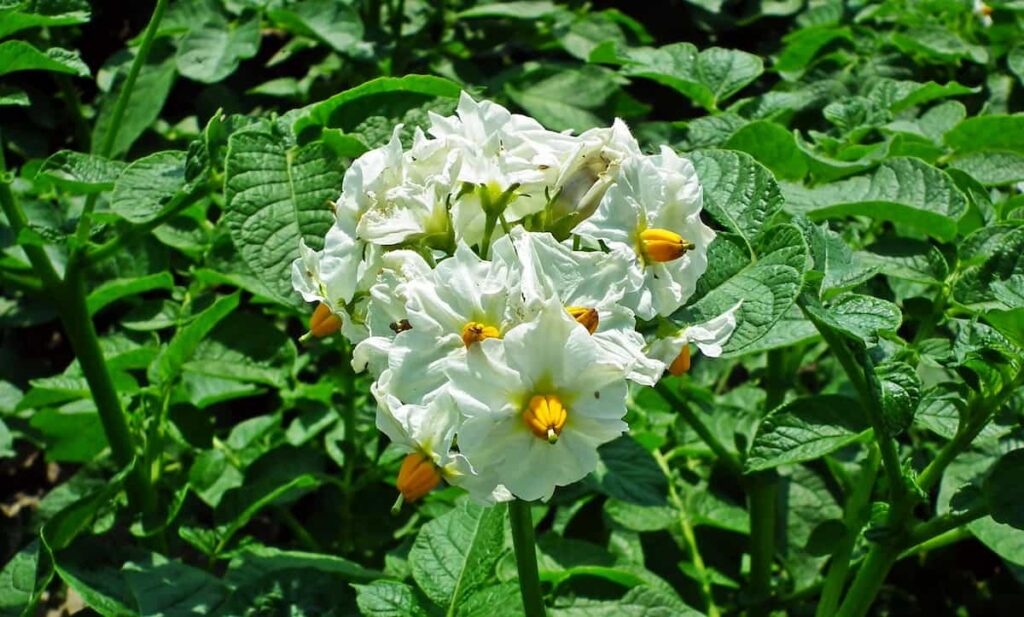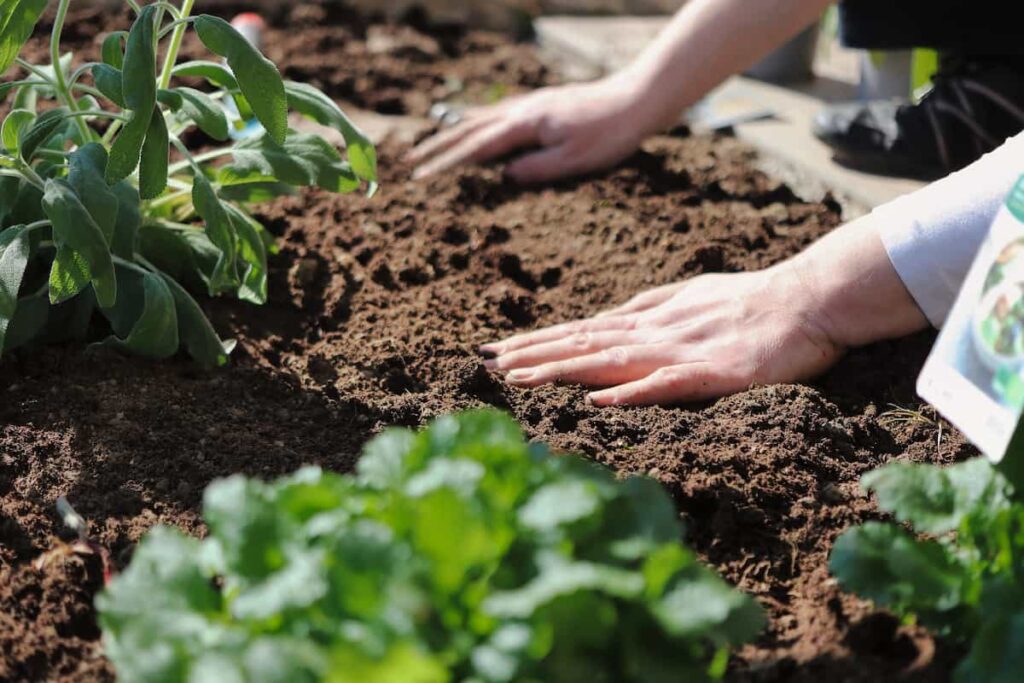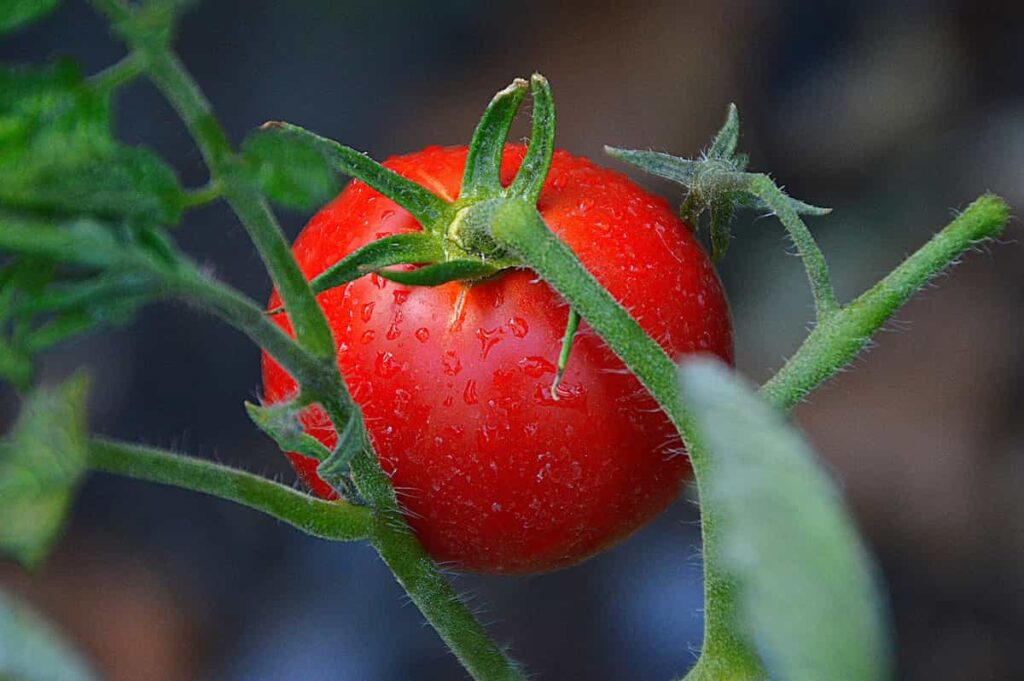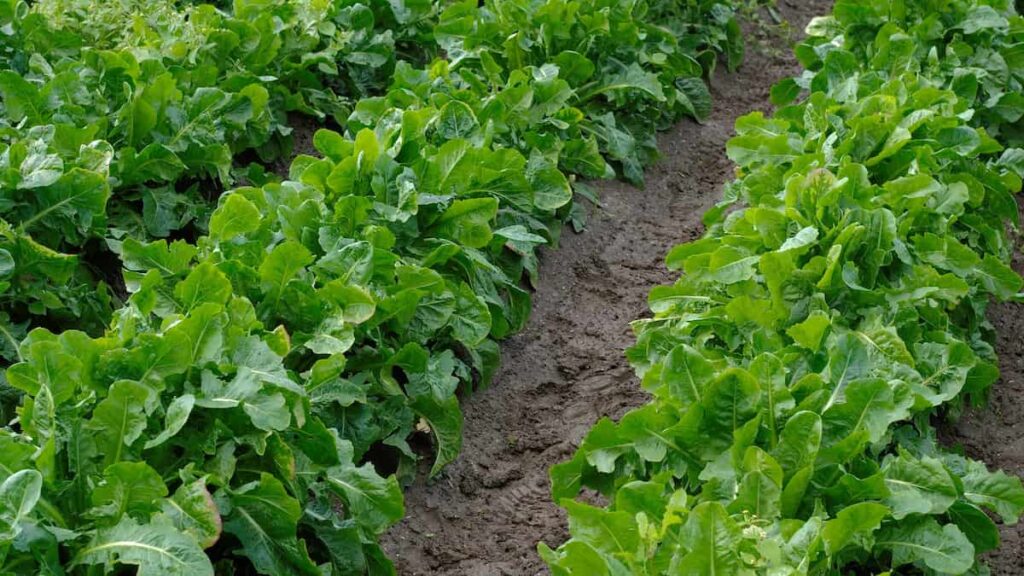Humic acid is a key player in sustainable agriculture, and its use has increased in recent years as farmers increasingly adopt organic and regenerative practices. Humic acid has a long history of use in gardening and agriculture. It is derived from decomposed organic matter, such as dead leaves and plants. Humic acid is a natural source of nutrients and trace minerals that can help improve plant growth and yield. It can also improve the structure and fertility of soils. However, humic acid is a specific type of organic matter with unique properties that benefit plant growth. This article will explain what humic acid is, its benefits and uses in agriculture, and how to apply it correctly.

Humic Acid role in agriculture
What is Humic Acid?
- Humic acid is an organic compound derived from plant and animal matter decomposition. It is a major humus component, the dark organic matter that forms in soils and other environments. Humic acid has several benefits for plants. It helps to improve the soil structure, increase moisture retention, and increase nutrient uptake. Humic acid also has a stimulatory effect on plant growth. Humic acid can be applied to plants as a liquid or foliar spray. Following the manufacturer’s instructions for application rates and timing is essential. Humic acid is a natural substance derived from decomposing plant and animal matter.
- Humic acid can be applied to plants as a liquid or foliar spray. The recommended dosage mainly depends on the type of plants being treated and the desired effect. Generally, a higher concentration is required for young plants or plants under stress.
- The composition of humic acid varies depending on its source. However, all types of humic acid contain carbon, hydrogen, and oxygen. The ratio of these elements determines the properties of the humic acid. For example, high-carbon humic acids are more resistant to degradation than low-carbon types.
- The effect of humic acid on plants depends on several factors, including the concentration of the solution, the type of plant, and the growth stage. Younger plants are generally more sensitive to the effects of humic acid than older plants. Seedlings are especially vulnerable to damage from high concentrations of humic acid.
In case you missed it: How to Grow Asparagus in USA: Soil, Propagation, Planting, Care, and Farming Tips

Humic Acid foliar spray benefits
- Humic acid is the most important organic acid in agriculture. It is present in all soils and is a major component of organic matter. Humic acid plays a key role in soil fertility and plant growth. It helps to improve soil structure, increase water retention, and promote nutrient uptake by plants. Humic acid also enhances the efficiency of pesticides and fertilizers and can improve the shelf life of fruits and vegetables.
- It can improve soil structure, increase nutrient availability, stimulate plant growth, and promote root development. Additionally, humic acid can improve irrigation efficiency and reduce plant water stress. It can also help to detoxify soils and protect plants from herbicides and pests.
- Humic acid foliar sprays are an effective way to deliver this important nutrient to plants. When applied to the leaves, humic acid can increase chlorophyll production, improve photosynthesis, and stimulate root growth. Humic acid foliar sprays can also help to protect plants from stress factors such as drought, heat, cold, and disease.
- Humic acid foliar spray can significantly improve crop yields, whether applied alone or in combination with other nutrients. In one study, wheat crops treated with a humic acid foliar spray showed a yield increase of 20-25%. Other research has shown that applying humic acid to tomatoes can improve fruit quality and extend shelf life by up to two weeks.
- Humic acid is an organic matter derived from decomposed plants and animals. It is a brown or black substance soluble in water and has a high cation-exchange capacity. Humic acid can improve soil’s physical, chemical, and biological properties.
- Humic acid can increase the soil’s ability to nutrients, increase the soil’s cation-exchange capacity, improve soil structure, reduce compaction, and increase drainage. Humic acid can also stimulate plant growth by increasing the uptake of essential nutrients and improving fertilizer use efficiency.
- In agriculture, humic acid is used as a Liquid or foliar spray. It is applied to plant leaves to promote growth and protect against drought, heat, cold, pests, and diseases. The benefits of humic acid for plants include increased growth rate, improved nutrient uptake, enhanced photosynthesis, increased resistance to stressors, and improved yields.
- Humic acid can improve soil structure, increase water retention, and enhance plant nutrient uptake. It can also stimulate plant growth and improve yields. Humic acid is available in liquid or foliar spray form and can be applied to crops at different stages of growth. The benefits of humic acid are dose-dependent, so it is essential to follow the manufacturer’s recommendations when applying it to crops. Too much humic acid can have negative effects on plant growth.
In case you missed it: How to Grow Kohlrabi in USA: Soil, Propagation, Planting, Care, and Farming Tips

How to apply Humic Acid to plants?
When applying humic acid to plants, there are two main methods: liquid and foliar spray. Both have benefits and drawbacks, so choosing the right method for your needs is essential.
Liquid application is the easiest and most common method. You can mix the humic acid with water and apply it to your plants using a watering can or hose attachment. The advantage of this application is that it’s quick and easy. However, getting the correct dosage with the liquid application can be difficult, so it’s essential to follow the directions on the product label carefully.
Foliar spray is a more targeted method of application. You mix the humic acid with water and apply it directly to the leaves of your plants using a pump sprayer. This method is ideal for treating specific problems like nutrient deficiencies or pest infestations. However, foliar spray takes longer than liquid application, and you need to be careful not to oversaturate the leaves of your plants.
Effect of Humic Acid on plant growth
- Humic acid is essential in agricultural production and can significantly impact plant growth. There are many ways to apply humic acid to plants, including liquid and foliar sprays, and the benefits of doing so can be significant.
- Humic acid has been shown to improve plant growth in a number of ways. For example, it can improve the uptake of essential nutrients, increase photosynthesis, and stimulate root growth. In addition, humic acid can help to protect plants from stressors such as drought and heat.
- The dosage of humic acid required for optimal plant growth will vary depending on the application method and the specific needs of the plants being grown. Starting with a lower dose and increasing it as needed is generally recommended.
Composition of Humic Acid in agriculture
- The composition of humic acid can vary depending on its source. However, it typically contains high carbon, nitrogen, potassium, and sulfur levels.
- The dosage and composition of humic acid foliar sprays will vary depending on the specific crop being treated. A solution containing 1-2% humic acid is recommended for general use.
- Humic acid is a naturally occurring organic matter in soils, sediments, and aquatic environments. It is formed by the decomposition of plant and animal material and is a major component of organic matter. Humic acid has a high cation-exchange capacity, making it an essential agricultural soil amendment.
- Humic acid consists of three main fractions: fulvic, humic, and humins. Fulvic acids are the most soluble fraction of humic acid and are composed of smaller molecules than humic acids. Humic acids are the largest and most complex fraction of humic acid and are composed of macromolecules with a high molecular weight. Humins are the least soluble fraction of humic acid and are composed of large polymeric molecules.
In case you missed it: 10 Organic Fertilizers for Your Vegetable Garden: When and How to Apply

Impact of soil application with Humic Acid
Adding humic acid to agricultural soils includes improved soil fertility, increased water retention, improved cation exchange capacity, and enhanced nutrient uptake by plants. Humic acid can also improve the quality of crop yields by increasing the size, weight, and nutritional value of fruits and vegetables.
Humic acid is a key player in plant health. It affects soil in many ways, including improving water retention, aeration, and drainage. Humic acid also helps to release soil nutrients for plants. In addition, humic acid can improve clay soils’ structure and help regulate pH levels.
Humic Acid fertilizer uses
Humic acid is a natural substance that can be extracted from decaying organic matter, such as compost. It is also present in some soil types. When used as a fertilizer, humic acid can improve the structure and fertility of the soil, and it can also help to increase the uptake of nutrients by plants.
There are several ways in which humic acid can be applied to agricultural land. It can be sprayed onto the leaves of plants (foliar spray), added to irrigation water, or mixed into the soil. The benefits of using humic acid as a fertilizer include the following:
Improved soil structure – Humic acid can help improve the structure of sandy and clay soils. This improved structure leads to better aeration and drainage and ultimately results in healthier plants.
Increased nutrient uptake – Plants grown in soils with high levels of humic acid tend to have increased uptake of essential nutrients like nitrogen, phosphorus, and potassium. This results in healthier plants with better yields.
Improved plant growth – Generally, plants that receive regular humic acid applications grow faster and more resistant to drought and pests.
Improved plant health – Humic acid helps promote healthy plant growth by providing essential nutrients and improving water uptake and other minerals.
Increased crop yields – Humic acid can increase crop yields due to its ability to improve plant health and increase nutrient uptake.
In case you missed it: Wisconsin Vegetable Planting Calendar: Month-wise Chart, Dates Guide, Schedule for Fall, Winter, Spring, and Summer Seasons

Reduced fertilizer requirements – Humic acid can help reduce the amount of fertilizer required for crops due to its ability to improve nutrient uptake efficiency.
Improved soil quality – Humic acid can improve soil’s physical and chemical properties, resulting in improved soil quality.
Enhanced environmental sustainability – Humic acid can help reduce environmental impacts associated with agriculture due to its ability to improve soil quality and reduce fertilizer requirements.
Dosage and composition of Humic Acid
The dosage and composition of humic acid fertilizers vary depending on the manufacturer. However, most products contain 10-20% humic acids by weight. For best results, follow the instructions on the fertilizer label carefully.
The composition of humic acid varies depending on its source. For example, agricultural soils tend to have higher levels of fulvic acids than forest soils. The humic acid composition also varies depending on the degree of decomposition; fresher sources will have higher levels of fulvic acids, while more decomposed sources will have higher levels of humic acids.
Humic acid liquid spray benefits
Humic acid is a beneficial compound that can be added to agricultural sprays. It provides various benefits, including improved plant growth, nutrient uptake, and soil health. Humic acid can also help to increase the efficacy of other agricultural sprays by improving the absorption of the active ingredients.
The Humic Acid application rate of dosage
- The ideal application rate and dosage of humic acid for agricultural purposes depend on several factors, including the crop type, the growth stage, and the soil conditions.
- Humic acid can be applied directly to the soil or plant leaves or incorporated into irrigation water. When applying humic acid to the soil, it is essential to ensure that the product is evenly distributed and that the soil is moistened before application. This will help ensure that the humic acid has maximum contact with plant roots.
- Foliar applications of humic acid are most effective in the early morning or evening hours when the humidity is higher, and the air is cooler. This allows the humic acid solution to adhere to plant leaves and penetrate plant cells. It is essential to avoid spraying in direct sunlight, as this can cause leaf burn.
- The truth is an initial application of humic acid should be heavy, usually at about 4 to 5 lbs of granular humic acid per 1000 square feet. Then, the following year, only 2 to 3 pounds should be needed for this same lawn.
Frequently asked questions about Humic Acid in agriculture
Can I mix Humic Acid with NPK?
Humic acids promote the conversion of mineral nutrients into available forms for plants. Our findings claim that nutrient absorption by plants is significantly higher if we increase the humic acid level along with NPK application.
In case you missed it: How to Grow Eggplant in USA: Soil, Propagation, Planting, Care, and Farming Tips

Will Humic Acid burn plants?
Humic acid will not burn plants, although manufacturers will add nitrogen. Adding nitrogen is not a bad thing and will benefit the plants.
Is Humic Acid suitable for all plants?
Humic acid buffers soil pH to 5.5 to 7.5, which is ideal for plant development and nutrient absorption. Therefore, acting as a natural chelator, they help plant roots to absorb nutrients efficiently to create long-term positive effects on soil quality and productivity.
What does Humic Acid do for soil?
Humic acid increases nutrient uptake, drought tolerance, and seed germination. It increases the microbial activity in the soil, making it an excellent root stimulator. It increases the availability of nutrients in our fertilizers and those already existing in your soil.
How often should you apply Humic Acid?
1–2 times per year is the optimal application schedule for humates and humic acid. Make your first application in early spring, when your lawn greens up. This lines up with your spring fertilizer timing.
Is Humic Acid suitable for flowering plants?
Humic acid boosts the soil’s physical, chemical, and biological structure, promoting better plant growth and flower production! Mix a tablespoon of humic acid per gallon of water for home gardeners who want to improve their flowering plants’ blooms. With a spray pumper, spray the solution liberally on the garden soil.
Is Humic Acid good for sandy soil?
Humic acid can increase water-holding capacity in sandy soils, significantly reducing water evaporation and increasing its availability for plant use.
Can you give a plant too much Humic Acid?
Too much humic acid will not affect your lawn directly in any notable way. It will not make your soil too soft, it will not rot the roots of your grass, and it will not cause any discoloration.
Conclusion
Humic acid is a key player in sustainable agriculture. It helps to improve soil health, increase crop yields, and reduce the need for chemical inputs. Humic acid is a natural substance in soil, sediment, and organic matter. It is an essential component of healthy soils and benefits plant growth. It is a key ingredient in many agricultural and horticultural products, including liquid and foliar sprays. It is used for various purposes, including soil amendment, fertilizer, and pest control.
- Types of Pesticides Used in Agriculture: A Beginner’s Guide
- Economical Aquaculture: A Guide to Low-Budget Fish Farming
- 15 Common Planting Errors That Can Doom Your Fruit Trees
- How to Make Houseplants Bushy: Effective Tips and Ideas
- Innovative Strategies for Boosting Coconut Pollination and Yield
- Pollination Strategies for Maximum Pumpkin Yield
- The Complete Guide to Chicken Fattening: Strategies for Maximum Growth
- Natural Solutions for Tulip Problems: 100% Effective Remedies for Leaf and Bulb-Related Issues
- Revolutionizing Citrus Preservation: Towards a Healthier, Greener Future
- Natural Solutions for Peony Leaf and Flower Problems: 100% Effective Remedies
- Maximizing Profits with Avocado Contract Farming in India: A Comprehensive Guide
- Natural Solutions for Hydrangea Problems: 100% Effective Remedies for Leaf and Flowers
- The Ultimate Guide to Choosing the Perfect Foliage Friend: Bringing Life Indoors
- From Sunlight to Sustainability: 15 Ways to Use Solar Technology in Agriculture
- The Ultimate Guide to Dong Tao Chicken: Exploring from History to Raising
- The Eco-Friendly Makeover: How to Convert Your Unused Swimming Pool into a Fish Pond
- Mastering the Art of Delaware Chicken Farming: Essentials for Healthy Backyard Flocks
- 20 Best Homemade Fertilizers for Money Plant: DIY Recipes and Application Methods
- How to Craft a Comprehensive Free-Range Chicken Farming Business Plan
- Brighten Your Flock: Raising Easter Egger Chickens for Beauty and Bounty
- How to Optimize Your Poultry Egg Farm Business Plan with These Strategies
- Subsidy for Spirulina Cultivation: How Indian Government Schemes Encouraging Spirulina Farmers
- Ultimate Guide to Raising Dominique Chickens: Breeding, Feeding, Egg-Production, and Care
- Mastering the Art of Raising Jersey Giant Chickens: Care, Feeding, and More
- Ultimate Guide to Raising Legbar Chickens: Breeding, Farming Practices, Diet, Egg-Production
- How to Raise Welsummer Chickens: A Comprehensive Guide for Beginners
- How to Protect Indoor Plants in Winter: A Comprehensive Guide
- Ultimate Guide to Grow Bag Gardening: Tips, Tricks, and Planting Ideas for Urban Gardeners
- Guide to Lotus Cultivation: How to Propagate, Plant, Grow, Care, Cost, and Profit
- Agriculture Drone Subsidy Scheme: Government Kisan Subsidy, License, and How to Apply Online
- Ultimate Guide to Raising Araucana Chickens: Breed Profile, Farming Economics, Diet, and Care
- Bringing Hydroponics to Classroom: Importance, Benefits of Learning for School Students
- Ultimate Guide to Raising Polish Chickens: Breed Profile, Farming Economics, Diet, and Care
- Ultimate Guide to Raising Australorp Chickens: Profile, Farming Economics, Egg Production, Diet, and Care
- Silkie Chicken Farming: Raising Practices, Varieties, Egg Production, Diet, and Care
- Sussex Chicken Farming: Raising Practices, Varieties, Egg Production, Diet and Care
How to prepare humic acid organically at home?
What is the details prosidure of seed treatment with liquid humic acid .